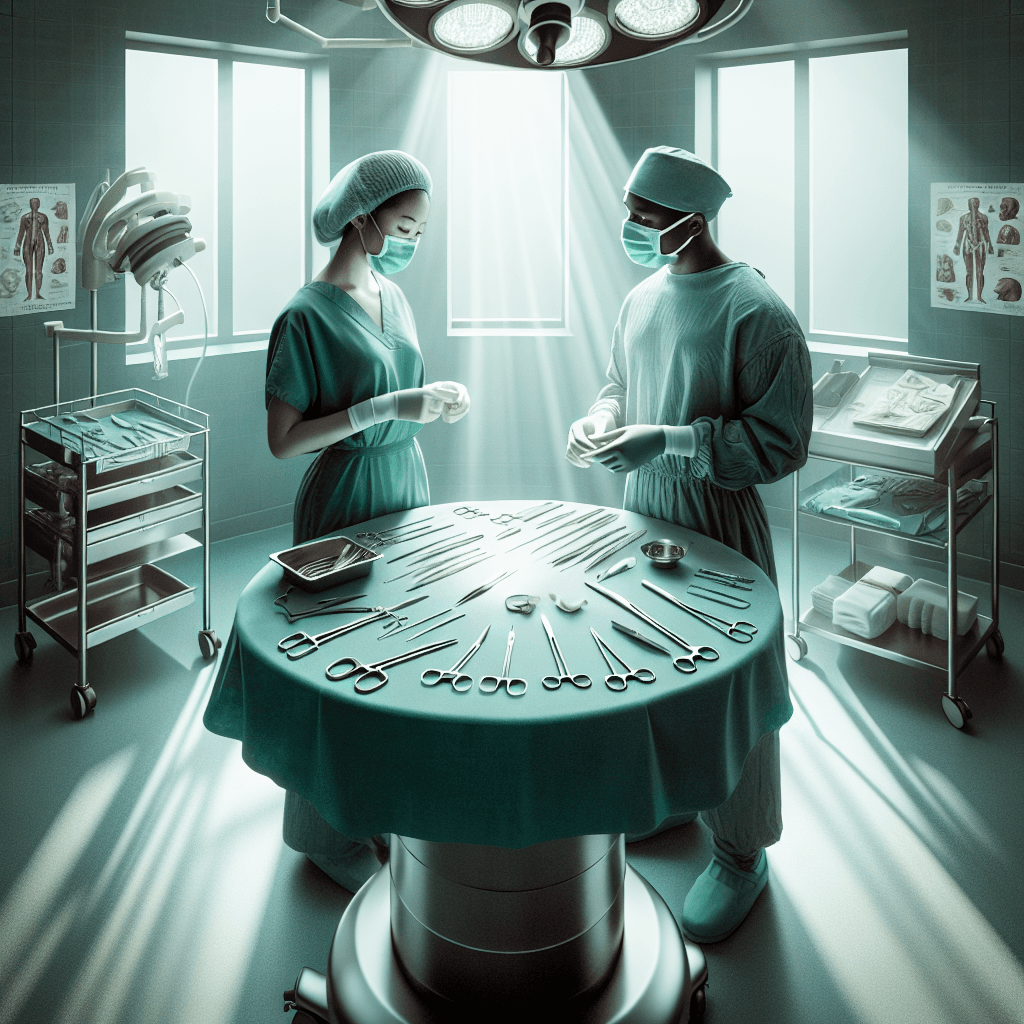Why are surgical scrubs and operating rooms often colored green or blue
It’s not a style choice; it’s a clever scientific hack designed to combat a dangerous optical illusion that could happen mid-operation.


Too Long; Didn't Read
TLDR: Green and blue are the opposite of red on the color wheel, which helps reduce eye strain for surgeons who stare at blood for long periods. It also prevents them from seeing distracting green after-images when they look away at a white surface, improving focus.
Beyond the White Coat: Why Are Surgical Scrubs and Operating Rooms Often Colored Green or Blue?
When you picture a surgeon, what color do they wear? While the iconic white lab coat is a symbol of the medical profession, inside the operating room, you'll find a world dominated by shades of green and blue. From the drapes covering the patient to the scrubs worn by the entire surgical team, this specific color palette is no accident or fashion statement. It's a deliberate, science-backed choice designed to improve surgical outcomes, enhance focus, and ensure the safety of everyone in the room. This post delves into the fascinating reasons why the sterile white of the past gave way to the calming greens and blues we see in surgical settings today.
The Problem with White: Glare and Ghost Images
For much of medical history, white was the color of choice in hospitals. It symbolized cleanliness and purity, a critical message in an era before modern sterilization techniques were fully understood. However, by the early 20th century, surgeons began to realize that an all-white environment was causing significant problems.
Under the powerful, bright lights of an operating theater, pristine white surfaces created a harsh glare, leading to eye strain and headaches for the surgical staff during long, complex procedures. More importantly, this stark white backdrop created a dangerous visual phenomenon known as an afterimage, or "ghost image."
When a surgeon focuses intensely on the deep red color of a patient's blood and internal organs for an extended period, their eyes' light-sensitive cells become desensitized to red. If they then shift their gaze to a white surface, their brain perceives a distracting, greenish-blue phantom image. This visual disruption could momentarily blind the surgeon to crucial details, a potentially catastrophic issue in the middle of a delicate operation.
The Solution in Green and Blue: A Lesson in Color Theory
The solution to the problem of afterimages lies in basic color theory. On the color wheel, green and blue are the direct opposites of red. By the mid-20th century, hospitals began adopting these colors for their operating rooms and surgical attire. This switch had two major visual benefits:
-
Neutralizing Afterimages: Looking at green or blue scrubs and drapes helps to refresh a surgeon's eyes after staring at red. The green afterimage created by the color red simply blends into the background, becoming unnoticeable. This allows the surgeon's vision to remain stable and free from distracting phantoms.
-
Enhancing Visual Acuity: Constantly viewing green and blue actually makes the eyes more sensitive to variations in red. This is crucial for surgeons, as it helps them better distinguish between the subtle shades of red found in human anatomy, from different tissues and blood vessels to potential abnormalities. This heightened perception leads to greater precision during surgery.
More Than Just Vision: The Practical and Psychological Impact
Beyond the critical visual benefits, green and blue offer other practical and psychological advantages that contribute to a safer and more effective surgical environment.
- Stain Management: While it may seem counterintuitive, bloodstains are less jarring and graphic on a green or blue background compared to stark white. This can help reduce anxiety for both the surgical team and the patient, should they see them. The stains are still visible for cleanliness checks but don't create an alarming contrast.
- Psychological Calm: Colors have a well-documented effect on our mood and perception. Green and blue are widely associated with feelings of calm, tranquility, and healing. In the high-stress environment of an operating room, this can create a more serene atmosphere, helping to soothe nerves and promote focus among the surgical staff.
In conclusion, the shift from clinical white to cool green and blue in operating rooms is a perfect example of how science can inform even the smallest details of medical practice. This deliberate color choice is not about aesthetics but about function, directly supporting a surgeon's ability to perform at their best. By reducing eye fatigue, eliminating distracting visual phenomena, and enhancing the ability to see critical details, these colors play a vital, if often overlooked, role in the success and safety of every surgery. It’s a testament to the thoughtful innovation that continually pushes medicine forward.


